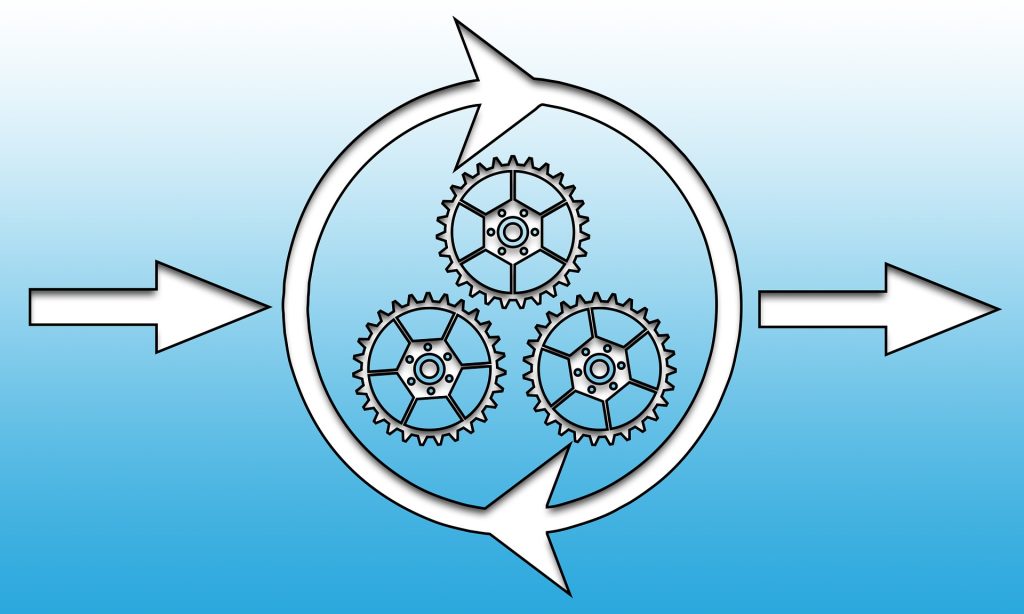As a certified public accountant and business advisor with 37 years of experience, I have had the opportunity to work with numerous businesses during various stages of their operating life. What I found fascinating is how business owners address human capital and workforce management issues; Often a Co-Employment model was the solution.
When you look at the operating budgets of most organization, the costs associated with their Workforce (the cost to manage employees, to pay employee wages, to provide benefits, to provide workers compensation insurance, to provide employer liability insurance, and to pay the related payroll and unemployment taxes,) represents more than one third of their operating budget. Through the years I have gained insight from the different approaches business owners and managers used to address the challenges of operational efficiency while either engaging in human resource management or not engaging in human resource management.
Managing Your Workforce
One of the key aspects of an organization’s decision to engage in managing their workforce has to do with how the owners accept guidance from experts in a collaborative approach. If management or the owners are not committed, the ultimate result is a recurring pattern of employee turnover, stress, and stagnation in the growth and operations of the business. Learn more: Leveraging PEO Industry Data and Partnerships: A Strategic Approach to Business Growth

Workforce Management Systems
To understand the value of a Professional Employer Organization (PEO), let us first examine how typical American businesses handle workforce management and regulatory compliance:
Historical Approach to Workforce Management
- Business owners utilize their accounting software, engage in a payroll service, or hire a bookkeeper/CPA to prepare the quarterly and annual payroll tax compliance reporting. In the event that there is not enough oversight of what is being reported through the payroll system, it is not uncommon to find that 2% shareholders did not include their health benefits in their W2 of an S corporation, the additional disclosures are not being disclosed on the face of the W-2, or the company did not take advantage of new pension limits or catchup contributions for eligible employees in the 401(k) plan.
- Using health insurance brokers to help identify and providing affordable health insurance that satisfies the federal and state requirements and administrating the benefit plan as employees need change.
- Administration and implementing retirement benefit plans. Including enrollment and questions throughout the year are handled by an individual broker or through an insurance product program with higher administrative costs and limited investment options.
- The Recruiting. Mentoring, Managing, and evaluating/disciplining a workforce in a way that does not increase employer liability. Some organization will utilize HR and recruiting services from their payroll provider, other times they do it on their own.
- Worker’s safety and workers compensation insurance is usually provided by a property and casualty insurance broker. Sometimes the brokers are interested in helping the owner control cost, and you find under audit that employees are misclassified resulting in an additional assessment after an audit of the prior year payroll.
Co-Employment’s Holistic Approach to Workforce Management
- Core Workforce Planning and Strategy
- Developing staffing plans that align with business objectives, including headcount forecasting, skill gap analysis, and succession planning for key roles.
- Creating organizational structures that support efficient operations while providing clear career pathways.
- Talent Management
- Recruitment and hiring processes to attract qualified candidates.
- Onboarding programs to effectively integrate new employees.
- Performance management systems include regular evaluations and feedback.
- Career development and training opportunities to build employee capabilities.
- Succession planning for critical roles and leadership positions.
- Compensation and Benefits
- Competitive salary structures based on market research and internal equity.
- Benefits packages include health insurance, retirement plans, and other rewards.
- Bonus and incentive programs to drive performance.
- Leave policies and time-off management.
- Legal Compliance and Risk Management
- Following employment laws and regulations
- Maintaining proper documentation and personnel records
- Workplace safety and health protocols
- Managing disciplinary processes and terminations
- Diversity, equity, and inclusion initiatives (A moving target based on changing trends)
- Employee Relations and Culture
- Building and maintaining a positive workplace culture
- Internal communications strategies
- o Employee engagement programs
- o Conflict resolution processes
- o Work-life balance initiatives.
- • Operations and Administration
- Payroll processing and management
- Time and attendance tracking
- Benefits administration
- HR information systems and data management
- Workplace policies and procedures
The Case for Co-Employment: A Modern Solution to Workforce Management Challenges
In today’s complex business environment, managing a workforce effectively requires expertise across multiple domains. As organizations focus on their core business objectives, many are discovering the strategic advantages of co-employment partnerships. Let us explore how co-employment addresses key workforce management challenges while providing innovative solutions for modern businesses.
Strategic Workforce Planning and Organization
The foundation of effective workforce management lies in strategic planning and organizational design. Co-employment partnerships offer businesses access to seasoned HR professionals who bring:
- Deep expertise in workforce analytics and planning
- Experience in creating scalable organizational structures.
- Knowledge of industry-specific staffing trends and benchmarks
- Strategic guidance on workforce optimization
Through co-employment, businesses can leverage this expertise without maintaining an internal team of HR strategists, allowing them to focus resources on core business activities while ensuring their workforce strategy remains competitive and forward-thinking.
Co-Employment’s Enhanced Talent Management
Talent acquisition and development represent significant challenges for many organizations. Co-employment partners bring sophisticated talent management capabilities including:
- Access to broader talent pools and recruitment networks
- Standardized, compliant hiring processes.
- Comprehensive onboarding programs
- Professional development and training resources
- Career pathing and succession planning tools.
By partnering with a co-employer, organizations can elevate their talent management practices while reducing the administrative burden on internal teams. This allows for more strategic focus on employee development and retention.
Co-Employment’s Scale Provides Competitive Compensation and Benefits
- More competitive healthcare plans through larger risk pools
- Enhanced retirement benefits
- Access to additional voluntary benefits
- Professional compensation analysis and benchmarking
- Streamlined benefits administration
This enhanced benefits package helps smaller and mid-sized businesses compete for talent with larger organizations while potentially reducing overall costs through economies of scale. Learn more: Unlocking Employee Satisfaction and Budget Savings with PEO Partnerships
Simplified Compliance and Risk Management Solutions with Co-Employment
In today’s complex regulatory environment, maintaining compliance requires significant expertise and resources. Co-employment partnerships provide:
- Dedicated compliance expertise and monitoring
- Updated policies and procedures.
- Risk management protocols.
- Workers’ compensation coverage and claims management
- Employment practices liability protection
A comprehensive approach to compliance and risk management helps protect businesses while reducing their administrative burden and potential liability exposure.
Co-Employment Strengthens Employee Relations and Culture
While some might worry that co-employment could impact company culture, many organizations find that it actually enhances their ability to build a positive workplace environment. Co-employers provide:
- Professional HR support for employee relations
- Structured feedback and communication systems
- Employee engagement programs and resources
- Conflict resolution expertise
- Work-life balance initiatives and support.
The PEO’s resources help organizations maintain a positive workplace culture while providing employees with additional support and resources.
Co-Employment’s Streamlined Operations and Administration
Perhaps one of the most immediate benefits of co-employment is the streamlining of HR operations and administration. Co-employers typically provide:
- Integrated HRIS platforms
- Automated payroll processing
- Time and attendance systems
- Centralized employee data management
- Standardized HR processes and procedures
Operational efficiency translates to cost savings and reduced administrative burden for the organization.
Making the Case for Co-Employment
When evaluating workforce management solutions, co-employment stands out as a comprehensive answer to many common challenges. By partnering with a Professional Employer Organization (PEO), businesses can:
- Access enterprise-level HR expertise and resources
- Reduce the administrative burden and costs.
- Improve compliance and risk management.
- Enhance employee benefits and services.
- Focus more resources on core business activities.
For organizations looking to optimize their workforce management while maintaining focus on their core business objectives, co-employment represents a strategic solution worth considering. Learn More: A Guide For HR Leaders Weighing PEO Co-Employment
Conclusion
The complexity of modern workforce management requires sophisticated solutions. Co-employment partnerships offer businesses of all sizes access to enterprise-level HR expertise and resources while reducing administrative burden and risk. As organizations continue to focus on agility and core competencies, co-employment represents an increasingly attractive solution for comprehensive workforce management.
Would you like to explore how co-employment might benefit your organization? Consider evaluating your current workforce management challenges against the benefits outlined above to determine if a co-employment partnership might be right for your business. Reach out to me at MarkBurger@Guidepointpeo.com or click one of our affiliates and they will contact you to answer your questions.

- How does co-employment specifically benefit small to mid-sized businesses in terms of cost savings and operational efficiency? Co-employment allows small to mid-sized businesses to share HR responsibilities with a Professional Employer Organization (PEO). This partnership can significantly reduce administrative burdens by handling tasks such as payroll processing, tax filings, benefits administration, and compliance with state and federal regulations. By leveraging the PEO’s expertise and resources, businesses can access better benefits packages, including more competitive healthcare plans and retirement benefits, which might be otherwise unaffordable. Additionally, co-employment can lead to operational efficiency by streamlining HR processes and allowing business owners to focus more on core business activities
- What are the potential risks or downsides of entering into a co-employment partnership with a Professional Employer Organization (PEO)? While co-employment offers many benefits, there are potential risks. One significant risk is shared liability; if the PEO fails to manage payroll taxes, employee safety protocols, or compliance issues properly, the client company may also face legal and financial consequences. There have been instances where PEOs have gone bankrupt or failed to remit payroll taxes, leaving client companies with substantial back taxes and penalties. To mitigate these risks, businesses should thoroughly vet PEOs, ensure they are certified by the IRS, and have proper bonding and insurance in place.
- How does co-employment impact company culture and employee relations, and what measures can be taken to ensure a positive workplace environment? Co-employment can positively impact company culture and employee relations by providing professional HR support, structured feedback systems, and employee engagement programs. However, there is a potential risk of employees feeling disconnected from the company if not managed properly. To ensure a positive workplace environment, businesses should maintain clear communication, involve employees in decision-making processes, and ensure that the PEO aligns with the company’s values and culture. Additionally, regular feedback and conflict resolution processes can help maintain a healthy and inclusive workplace culture.




